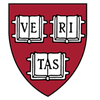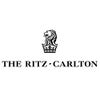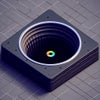The Harvard Bridge (also known locally as the MIT bridge or the "Mass Ave" bridge) carries Massachusetts Avenue (Route 2A) from Back Bay, Boston to Cambridge, Massachusetts. It is the longest bridge over the Charles River.
Named for the Reverend John Harvard, it was originally built in 1891 with a swing span. The bridge was revised over the years until its superstructure was completely replaced in the late 1980s. It is locally known for being measured in the idiosyncratic unit called the smoot.
In 1874, the Massachusetts Legislature passed two acts, Chapters 175 and 314 to authorize the construction of a bridge between Boston and Cambridge. Nothing further happened until 1882, when a follow-up act (Chapter 155) with more specifics was enacted. The location was expressed as
Acts of 1882, Chapter 155, Section 1: The cities of Boston and Cambridge are authorized to construct a bridge and avenue across Charles river, from a point on Beacon street, in Boston, to a point in Cambridge, west of the westerly line of the Boston and Albany railroad. ... to the limitation that the line thereof shall not be north-east of a line drawn from the junction of Beacon street and West Chester park, in Boston, to the junction of the harbor line with Front Street, extended, in Cambridge, nor south-west of a line drawn from the junction of Beacon street, Brookline avenue and Brighton avenue, in Boston, to the junction of the Boston and Albany railroad with Putnam avenue, extended, in Cambridge.
The bridge was to have a draw with an opening of at least 38 feet (12 m). Unfortunately, Boston did not like this act, mainly because it did not provide for an overhead crossing of the Grand Junction Branch of the Boston and Albany Railroad. So nothing happened until the act was amended by Acts of 1885, Chapter 129, which changed the draw to a clear opening of at least 36 feet (11 m) and no more, until the other bridges below the proposed location were required to have a larger opening. Still nothing happened, until the City of Cambridge petitioned the Massachusetts Legislature in 1887 to compel Boston to proceed. This resulted in Acts of 1887, Chapter 282, which was mandatory for both cities. It required that each city pay for half the bridge, and allowed Boston to raise up to US$250,000 (US$6.03 million in present terms) for this purpose, in excess of its debt limit. This implied an estimated cost of US$500,000 (US$12.1 million in present terms) for the bridge.
The act authorized a commission to build the bridge. The commission was to consist of the mayors of Boston and Cambridge plus one additional person to be appointed by the mayors. If the mayors failed to appoint a third commissioner, the governor was to do it for them. The mayors of Boston and Cambridge, Hugh O'Brien and William E. Russell, appointed Leander Greeley of Cambridge as the third commissioner. This changed over time.
| Year(s) | Mayor of Boston | Mayor of Cambridge | Third Commissioner |
|---|---|---|---|
| 1887–1888 | Hugh O'Brien | William E. Russell | Leander Greeley |
| 1889–1890 | Thomas N. Hart | Henry H. Gilmore | |
| 1891 | Nathan Matthews, Jr. | Alpheus B. Alger | Leander Greeley (died 15 February 1891) George W. Gale |
The bridge opened on 1 September 1891. The original cost of construction to 1 March 1892 was US$510,642.86. This is equivalent to US$12.3 million in present terms.
The expectations of having built the bridge were clear.
The effect that the bridge will have upon both cities is obvious. The low land and marshes on the Cambridge side, formerly almost valueless, have been filled in and have become valuable; and Cambridge is now connected with the choicest residential portions of Boston. The residents of the Back Bay, South End, Roxbury, and other southern sections of Boston are now connected directly, by way of West Chester park and the bridge, with Cambridge, Belmont, Arlington, and adjacent towns; and this thoroughfare in Boston, it is believed, will ultimately be the central one of the city.
In the Act of 1887, the bridge was to be a wooden pile structure with stone pavement for the first 200 feet (61 m) because the Charles River Embankment extension was expected to take that space, but that was changed such that the whole distance would be of iron spans on stone piers. The general plans were approved on 14 July 1887. The engineers were William Jackson (Boston City Engineer), John E. Cheney (assistant Boston City Engineer), Samuel E. Tinkham (assistant engineer), and Nathan S. Brock (assistant engineer at bridge).
The subsurface conditions at the bridge location are extreme. Much of Boston is underlain with clay, but the situation at the bridge is exacerbated by a fault which roughly follows the path of the Charles River itself. From a depth of approximately 200 to 300 feet (60 to 90 m) below existing ground, is a very dense till composed of gravel and boulders with a silt-clay matrix. Above that to approximately 30 feet (9 m) below the surface is Boston blue clay (BBC). Over this are thin layers of sand, gravel, and fill. The BBC is overconsolidated up to a depth of approximately 70 feet (20 m).
The substructure originally consisted of two masonry abutments and twenty-three masonry piers, as well as one pile foundation with a fender pier for the draw span. The superstructure was originally twenty-three cantilevered fixed spans and suspended spans, of plate girders with one swing span. The Boston abutment rests on vertical piles, while the Cambridge end is directly on gravel.
Originally, the bridge was built across the Charles River connecting West Chester Park, in Boston, with Front Street, in Cambridge. This is now called Massachusetts Avenue on both sides of the river. As originally built, the total length between centers of bearings on abutments was 2,164 feet 9 inches (659.82 m) with a draw 48 feet 4 inches (14.73 m) wide between centers. The width of the bridge was 69 feet 4 inches (21.13 m) except near and on the draw.
The bridge as built was composed of fixed and suspended spans roughly 75 feet (23 m) long and piers 90 feet (27 m) apart, center to center. The span lengths alternated between 75 and 105 feet (23 and 32 m). The longer spans were cantilevered, while the shorter spans were suspended between the cantilevers.
The original roadway contained two lanes for horse-drawn vehicles and two street car tracks, for a total width of 51.0 feet (15.5 m). There were also two 9-foot-2-inch (2.79 m) sidewalks. The original roadway and sidewalk stringers were of wood, with an approximately 1.25-inch (32 mm) thick covering of asphalt on the sidewalk.
The exception was at the swing span, which was 48 feet
(15 m) wide. This span was approximately 149 feet
(45 m) long, and sat on a wooden pier. It was a
double-cantilevered, electrically-driven structure also carrying a
bridge caretaker's house.
The bridge was named for the Reverend John Harvard, for whom Harvard University is also named, rather than after the university itself. Other names suggested included Blaxton, Chester, Shawmut, and Longfellow. The structure now called the Longfellow Bridge opened 15 years later. John Harvard was an early donor to what later became the university; not, as is often assumed, its founder.
Possibly due to its proximity to the bridge, there have been a number of tales reported at MIT as to how the bridge came to be named "Harvard". According to one MIT legend,[] the bridge is so named because when it was originally constructed the state offered to name it after the Cambridge school that was most deserving. Harvard argued that their contribution to education was well-known, and thus they deserved the name. MIT concurred, having analyzed the bridge and found it structurally unsound (and thus more deserving of the Harvard name than the MIT name). Subsequently the bridge collapsed after five years of construction and was rebuilt, confirming the MIT engineers' fears.[]
The story is apocryphal. The Harvard Bridge was first
constructed in 1891. MIT did not move to its current location
adjacent to the bridge until 1916. However, the 1980s
reconstruction actually was due to a design concern, see
below.
In 1898, 3-foot (0.91 m)-wide bicycle lanes were installed next to each curb.
The bridge was declared unsafe in 1909, requiring all of the iron and steel to be replaced. The draw was elevated slightly and the trolley rails were replaced as well.
When the Metropolitan District Commission (MDC) took control of the bridge in 1924, they rebuilt much of the bridge superstructure. They replaced the wooden stringers with steel "I" beams, topped wooden deck elements with concrete and brick, and replaced the street car rails. Structural steel hangers replaced wrought iron. The swing span was converted into two 75-foot (23 m) fixed spans the same width as the rest of the bridge. The wooden pier was heavily modified with concrete and stone to make it resemble the other piers, increasing the number of stone piers from 23 to 24.
Heavy traffic at the Mass Ave and Memorial Drive intersection on the Cambridge end of the bridge led to the construction of an underpass in 1931. The underpass eliminated the at-grade intersection.
The bridge was often known as the "Xylophone Bridge" because of the sound its wooden decking made when traffic traveled over it. This decking was replaced in 1949 with 3-inch (76 mm) concrete-filled "I-beam lok" grating topped with a 2.25-inch (57 mm) thick bituminous wearing surface. At this time, all bearings were replaced, and the trolley car tracks were removed, as were granite blocks. The trolley car poles were reused for street lights. Ramps between the bridge and the under-construction Storrow Drive were added.
The 1924 sidewalk slabs were replaced by precast, prestressed slabs in 1962.
The fifteen expansion dams were replaced or repaired in 1969.
There was an engineering study done by the Metropolitan District Commission (later merged into the Department of Conservation and Recreation) in 1971-1972 due to complaints by bridge users of excessive vibration. The bridge was found to be understrength for its load. Before the final study was complete, the recommendation was to place a load limit of 8 short tons (7.3 t) per axle and a total of 15 short tons (14 t) per vehicle, or to restrict trucks to the interior lanes, where the bridge was stronger. A 25-short-ton (23 t) limit was imposed.
Suggestions made included strengthening the existing structure by adding either struts or plates to make the existing four beams along the length of the bridge into a stiffening truss, or to replace the superstructure with a new one, made of either steel or concrete, which would be up to current standards. The recommendation was to replace the superstructure with one weighing approximately the same in order to reuse the piers, which were in good condition.
The reasoning was that the cost of a new structure could be predicted much more easily than the cost of repairing and reinforcing the existing bridge. The resulting new bridge would be of known materials and quality, such as ductile structural steel rather than brittle wrought iron, and rated at AASHO HS-20. Repairing the existing structure would leave old wrought iron of uncertain quality and condition standing, and would not bring the design up to (then) current standards. Detailed engineering calculations were included. The price was estimated at 2.5 million to 3 million U.S. dollars (US$13 million in present terms).
The action taken based on this study was to establish load restrictions on the bridge, 15 short tons (14 t) in the outer lanes, 25 short tons (23 t) on the inner lanes. This was expanded in 1979 to a flat limit of 15 short tons (14 t) on the whole bridge.
After the failure of the Mianus River Bridge at Greenwich, Connecticut in 1983, the Harvard Bridge was shut down and inspected because it contained similar elements, specifically the suspended spans. Traffic was restricted to the inner two lanes due to the discovery of two failed hangers on span 14. A few days later, all trucks and buses were banned from the bridge.
In 1986, a report was published containing the plan to replace the superstructure on the existing supports. Alternatives considered were very similar to the 1972 report, and were similarly decided. Structural modifications included an upgrade from four longitudinal girders to six of the same shape, elimination of ramp "B", and replacement of a stairway with a handicapped pedestrian ramp on the Boston end of the bridge.
The historic value of the bridge was considered significant, so the plan was to make the replacement superstructure appear similar, with similar railing and lighting. In order to document the pre-existing structure, a Historic American Engineering Record (HAER) would be prepared.
Ramp "B", from southbound (Boston bound) bridge lanes to eastbound Storrow Drive, caused traffic to merge onto Storrow Drive from the left (high speed) lanes using a short acceleration lane, causing safety issues. The MDC requested elimination of this ramp. Compared to overall bridge traffic of 30,000 vehicles per day, traffic on ramp B was found to be low, approximately 1,500 vehicles per day with a peak of 120 vehicles per hour.
Pier 12 was exhibiting inappropriate movement and was scheduled for reinforcement.
The work would be done in two phases. Phase 1 would reinforce the downstream side of the bridge to allow MBTA bus traffic, and was expected to take 5 months. Most of this effort would be spent on the underside of the bridge and would not affect existing traffic. Phase 2 would replace the entire superstructure and was expected to take three construction seasons to implement. Cost was estimated to be US$20M (US$39.7 million in present terms). Phase 1 finished in 1987, and Phase 2 in 1990.
The Harvard Bridge is measured, locally, in smoots.
In 1958, members of the Lambda Chi Alpha fraternity at MIT measured the bridge's eastern sidewalk by carrying or dragging the shortest pledge that year, Oliver Smoot, end over end. (Oliver should not be confused with his cousin, fellow MIT alumnus and Nobel laureate George Smoot.)[]
Crossing pedestrians are informed by length markers painted at 10-smoot intervals that the bridge is 364.4 smoots long, "plus one ear". The qualifier "plus or minus" was originally intended to express measurement uncertainty, but over the years the words "or minus" have gone missing in many citations, including the commemorative plaque and the markings on the bridge itself. The marks are repainted twice each year by members of the fraternity.
During the reconstruction in the 1980s, the smoot markings were
repainted on the new deck, and the sidewalks were divided into
smoot-length slabs
rather than the standard six feet.
Given that Smoot was 5 feet 7 inches (1.702 m) tall in 1958, the given measurement in smoots of 364.4 yields a "bridge length" of about 620 meters (2,030 ft). Published sources give the length of the bridge as approximately 660 meters (2,170 ft). The difference in length between the sidewalk markings and the published figure represents a 40-meter (130 ft) discrepancy. A possible cause is that in 1958, there were ramps to Storrow Drive on both sides of the bridge. There are smoot marks on both sidewalks, which fail to cover the entire length of the bridge. The fraternity apparently only measured the length of the sidewalk from the point where it is interrupted. It seems likely that the pledges were fooled by the apparent end of the sidewalk at the Storrow Drive ramps.
According to a marker near the southeast end of the bridge, Harry Houdini performed one of his "well known escapes" from this bridge on 1 May 1908. Other sources have it as 30 April 1908.





